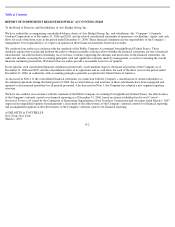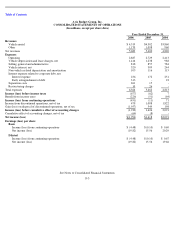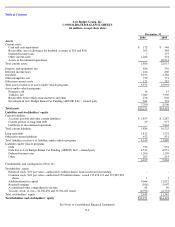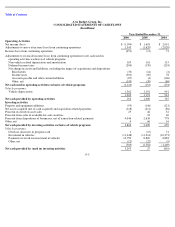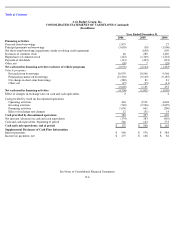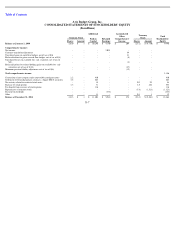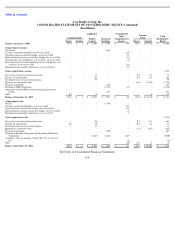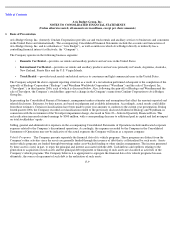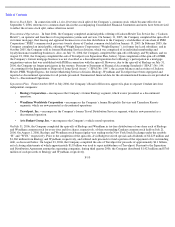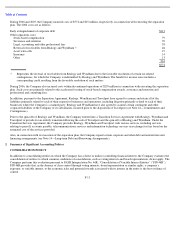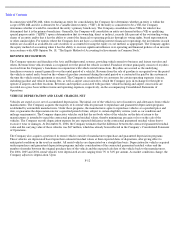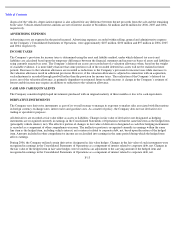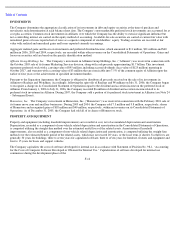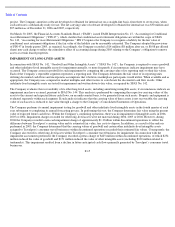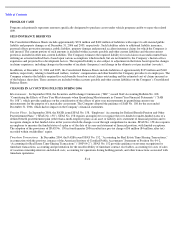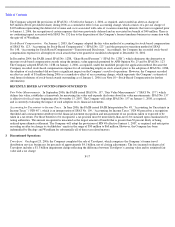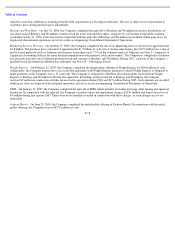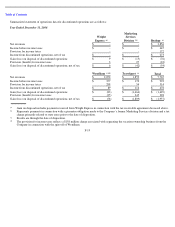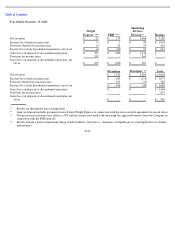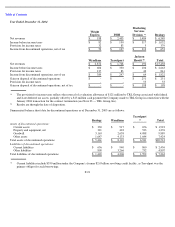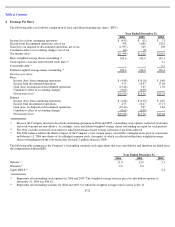Avis 2006 Annual Report Download - page 69
Download and view the complete annual report
Please find page 69 of the 2006 Avis annual report below. You can navigate through the pages in the report by either clicking on the pages listed below, or by using the keyword search tool below to find specific information within the annual report.
Table of Contents
In connection with FIN 46R, when evaluating an entity for consolidation, the Company first determines whether an entity is within the
scope of FIN 46R and if it is deemed to be a variable interest entity (“VIE”). If the entity is considered to be a VIE, the Company
determines whether it would be considered the entity’s primary beneficiary. The Company consolidates those VIEs for which it has
determined that it is the primary beneficiary. Generally, the Company will consolidate an entity not deemed either a VIE or qualifying
special purpose entity (“QSPE”) upon a determination that its ownership, direct or indirect, exceeds fifty percent of the outstanding voting
shares of an entity and/or that it has the ability to control the financial or operating policies through its voting rights, board representation
or other similar rights. For entities where the Company does not have a controlling interest (financial or operating), the investments in such
entities are classified as available-for-
sale securities or accounted for using the equity or cost method, as appropriate. The Company applies
the equity method of accounting when it has the ability to exercise significant influence over operating and financial policies of an investee
in accordance with APB Opinion No. 18, “The Equity Method of Accounting for Investments in Common Stock.”
REVENUE RECOGNITION
The Company operates and franchises the Avis and Budget rental systems, providing vehicle rentals to business and leisure travelers and
others. Revenue from vehicle rentals is recognized over the period the vehicle is rented. Franchise revenue principally consists of royalties
received from the Company’s franchisees in conjunction with vehicle rental transactions. Royalties are accrued as the underlying
franchisee revenue is earned (generally over the rental period of a vehicle). Revenue from the sale of gasoline is recognized over the period
the vehicle is rented and is based on the volume of gasoline consumed during the rental period or a contracted fee paid by the customer at
the time the vehicle rental agreement is executed. The Company is reimbursed by its customers for certain operating expenses it incurs,
including gasoline and vehicle licensing fees, as well as airport concession fees, which the Company pays in exchange for the right to
operate at airports and other locations. Revenues and expenses associated with gasoline, vehicle licensing and airport concessions are
recorded on a gross basis within revenue and operating expenses, respectively, on the accompanying Consolidated Statements of
Operations.
VEHICLE DEPRECIATION AND LEASE CHARGES, NET
Vehicles are stated at cost, net of accumulated depreciation. The initial cost of the vehicles is net of incentives and allowances from vehicle
manufacturers. The Company acquires the majority of its rental vehicles pursuant to repurchase and guaranteed depreciation programs
established by automobile manufacturers. Under these programs, the manufacturers agree to repurchase vehicles at a specified price and
date, or guarantee the depreciation rate for a specified period of time, subject to certain eligibility criteria (such as car condition and
mileage requirements). The Company depreciates vehicles such that the net book value of the vehicles on the date of return to the
manufacturers is intended to equal the contractual guaranteed residual values, thereby minimizing any gain or loss on the sale of the
vehicles. The Company records depreciation expense for any expected deficiency in the contractual guaranteed residual values due to
excessive wear or damages. At December 31, 2006, the Company estimates that the difference between the contracted guaranteed residual
value and the carrying value of these vehicles was $67 million, which has already been reflected in the Company’
s Consolidated Statement
of Operations.
The Company also acquires a portion of its rental vehicles outside of manufacturer repurchase and guaranteed depreciation programs.
These vehicles are depreciated based upon their estimated residual values at their expected dates of disposition, after giving effect to
anticipated conditions in the used car market. All rental vehicles are depreciated on a straight-line basis. Depreciation for vehicles acquired
under repurchase and guaranteed depreciation programs includes consideration of the contractual guaranteed residual values and the
number of months between the original purchase date of the vehicle and the expected sale date of the vehicle back to the manufacturers.
For 2006, 2005 and 2004, rental vehicles were depreciated at rates ranging from 7% to 34% per annum. As market conditions change, the
Company adjusts its depreciation. Upon
F
-
12


